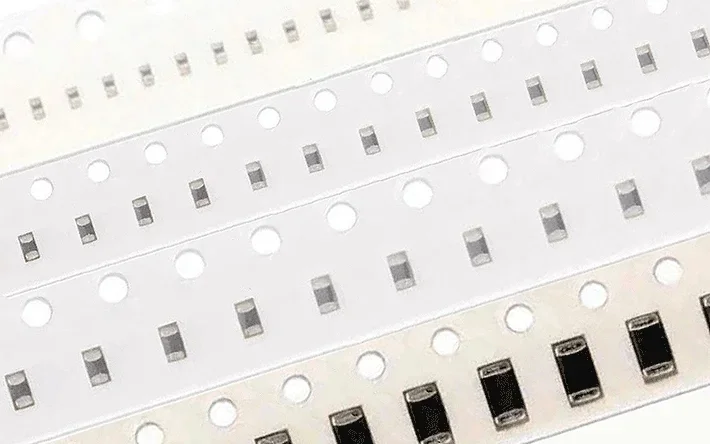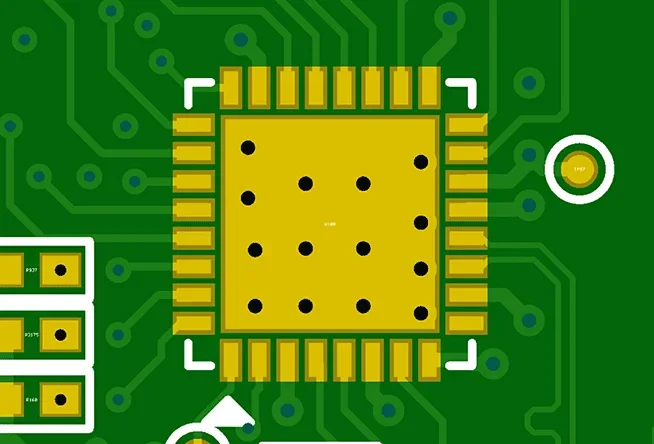
By enabling smaller, more compact designs, SMDs (surface mount devices) allow manufacturers to build lightweight, high-performance devices like smartphones, wearables, and medical implants. Understanding the various SMD sizes and corresponding PCB footprints is critical for proper PCB design and assembly.
This article will take you through the most commonly used SMD sizes — 01005, 0201, 0402, 0603, 0805, and 1206 — while also diving into how footprints influence the performance of these SMD components on your PCB.
What Are SMD Sizes?
SMD sizes refer to the physical dimensions of the surface-mounted electronic components, typically given in a code corresponding to the component's length and width.
The SMD size code is a combination of the component's size in hundredths of an inch, meaning that each code reveals the length and width of the component in imperial units.
For example, the 01005 size indicates a length of 0.01 inches and a width of 0.005 inches.
While these dimensions are in inches, they are often used interchangeably with their metric equivalents. Here's a detailed table showing common SMD sizes in both imperial and metric units:
|
SMD size
|
Imperial (inches)
|
Metric (mm)
|
|
01005
|
0.016 x 0.008
|
0.4 x 0.2
|
|
0201
|
0.02 x 0.01
|
0.6 x 0.3
|
|
0402
|
0.04 x 0.02
|
1.0 x 0.5
|
|
0603
|
0.06 x 0.03
|
1.6 x 0.8
|
|
0805
|
0.08 x 0.05
|
2.0 x 1.25
|
|
1206
|
0.12 x 0.06
|
3.2 x 1.6
|
The choice of SMD size is critical for determining the overall design and efficiency of the PCB. Now, let's explore these sizes in more detail.
Common SMD LED Packages and Specifications
The size of an SMD component impacts:
- Power handling: Smaller components often have lower power ratings.
- Precision: Certain sizes, like 01005 and 0201, are used in devices requiring extreme miniaturization.
- Assembly: Some sizes are easier or harder to place and solder depending on their dimensions.

Selecting the right size ensures your PCB is optimized for performance, reliability, and manufacturability.
Choosing the right SMD size for your PCB project is a critical decision. It affects not only the performance of your circuit but also the manufacturability and cost of production.
Common SMD Sizes and Their Applications
The SMD sizes include 01005, 0201, 0402, 0603, 0805, 1206, etc. Check them one by one below.
1. 01005 (0.4 mm x 0.2 mm)
Extremely tiny, 01005 components are commonly found in smartphones, hearing aids, and other ultra-miniaturized electronics. They are ideal for high-density PCBs where space is at a premium.
Due to their tiny size, 01005 components require advanced pick-and-place machinery and precise soldering techniques. Manual soldering is impossible, and even automated assembly can be challenging without high-tech equipment. But no worries, the advanced PCB assembly manufacturer PCBONLINE can handle 01005 SMD mounting.
2. 0201 (0.6 mm x 0.3 mm)
The 0201 SMD size components are used in a wide range of devices, from wearable electronics to medical devices. They provide the best balance between small size and ease of use in high-density circuits.
While still tiny, 0201 components are more commonly used in consumer electronics than 01005 due to their relatively easier assembly.
3. 0402 (1.0 mm x 0.5 mm)
0402 is a popular SMD size for general-purpose passive components such as resistors and capacitors in smartphones, tablets, and IoT devices. They are large enough for most automated manufacturing processes but small enough for space-conscious designs.
Footprint advice: Be cautious when designing pads for 0402 components. Too much solder paste can lead to bridging or cold joints.
4. 0603 (1.6 mm x 0.8 mm)
The 0603 SMD size components are widely used in consumer electronics, automotive systems, and industrial electronics. The 0603 SMD components are the go-to size for most moderate-density PCBs. They are a good compromise between performance and ease of use.
The 0603 components are relatively easy to handle during both SMT assembly, making them ideal for prototyping and high-volume production runs.
5. 0805 (2.0 mm x 1.25 mm)
Larger components like 0805 SMDs are commonly used in low to moderate power circuits, consumer devices, and medical and industrial electronics. Due to their size, they can handle higher power loads, making them suitable for applications where electrical stress is a concern.
The 0805 SMD size is often chosen when constrained space requires moderate power.
6.1206 (3.2mm x 1.6mm)
The 1206 is a large SMD size. The 1206 SMD components are chosen for applications that require higher power and better thermal dissipation, such as power LEDs, automotive, industrial controls, inverters, and RF applications.
1206 components are more robust than the above SMD sizes and are chosen for applications with more space and higher power.
What Are SMD PCB Footprints?

Footprints are the layout design patterns on the PCB that define where and how an SMD component will be soldered. They ensure the correct electrical and mechanical connection between the component and the PCB. Each SMD size requires a specific footprint to maintain proper pad clearance and solder mask coverage.
Key factors to consider when designing footprints include:
- Pad size: The pad should match the component's terminals to avoid soldering defects.
- Clearance: Leave enough space between pads to prevent solder bridging.
- Thermal relief: Use thermal relief connections in copper pads for larger components to prevent heat sinking during soldering.
How to Choose the Right SMD Size
Selecting the right SMD size depends on your application requirements and PCB design constraints:
- For small, space-constrained devices: Consider smaller sizes like 01005 and 0201.
- For ease of assembly and lower cost: Sizes like 0603 and 0805 are typically easier to handle.
- For power handling: Larger components like 1206 and above and through-hole components are often better at dissipating heat and handling higher current loads.
SMD size comparison
To get a better understanding of the size differences, here's an illustration showing the relative scale of these common SMD components.

One-stop SMD PCB Assembly Manufacturer PCBONLINE
Looking for a reliable partner to bring your PCB designs to life? PCBONLINE offers top-tier PCB manufacturing and PCBA services that cater to your specific needs. With their experience in IoT applications and expertise in assembling SMD components, they deliver high-quality, cost-effective solutions—from prototyping to full-scale production.

Founded in 1999, PCBONLINE has two large advanced PCB manufacturing bases, one PCB assembly, stable supply chains to source SMDs and materials, and an R&D team.
PCBONLINE provides free DFM (design for manufacturing) and one-on-one engineering support to ensure your PCB design and BOM components are okay for building the final products successfully.
PCBONLINE offers cost-effective SMDs as it directly purchases SMD and PTH components from original component factories and first-class suppliers in bulk.
All the SMDs, PTH components, and materials for electronics manufacturing are traceable and high-quality.
PCBONLINE sources SMD components and fabricates PCBs, PCBAs, and box-builds, including testings and value-added services under one roof to save your time and money.
PCBONLINE has rich experience in jig/fixture design and reflow/wave temperature controls to ensure the best SMD soldering effects.
High-quality PCB and PCBA manufacturing certified with ISO 9001:205, ISO 14001:2015, IATF 16949:2016, RoHS, REACH, UL, and IPC-A-610 Class 2/3.
Whether you're designing high-density boards with ultra-miniature components like 01005, or working with more common sizes like 0603, etc, working with PCBONLINE for components sourcing and one-stop PCBA manufacturing ensures your project success yielding results reaching and beyond your expectations. To get a quote for your project, email info@pcbonline.com.
Conclusion
Understanding SMD sizes and footprints will ensure a reliable, high-performing PCB. Connect with PCBONLINE to turn your electronic designs into reality with industry-leading precision and reliability.
PCB assembly at PCBONLINE.pdf




